In the News
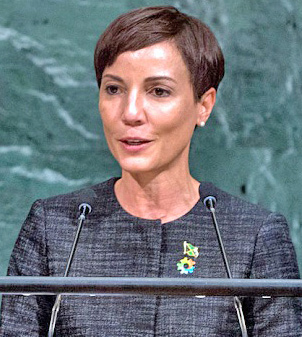
New York, USA – Trinidad and Tobago’s Minister for Foreign Affairs Dennis Moses, echoing other senior government officials throughout the General Assembly’s annual general debate, questioned how, after the spate of recent catastrophic events in the Caribbean, South Asia and elsewhere, one could deny that “climate change is real, and it is upon us.”
Shifting weather patterns, global warming and rising sea levels are impacts of climate change, he said, and extending his nation’s condolences and solidarity to those affected, emphasized that resources, cooperation and collaboration of the international community will be required to help rebuild and build back better.
“The events of the last months in the Caribbean once more remind us all that small island developing States remain at the forefront of the impact of climate change,” Moses said. Yet, in light of their re-categorization based on out-dated formulae of gross domestic product (GDP) per capita, Caribbean countries will not qualify for aid and development assistance.
“I join my Caribbean colleagues in calling for a multidimensional approach that takes into consideration real national needs and priorities, as well as these extraordinary circumstances to provide access to development assistance, aid and debt relief, as the Caribbean region embarks on the arduous task of recovery, rehabilitation and reconstruction together,” Moses stressed.
Noting that oceans cover three-quarters of the earth’s surface and contain over 95 per cent of its water, he called “indisputable” the critical importance of its conservation.
After expressing her country’s condolences and support for the Caribbean nations affected by the recent national disasters, Jamaica’s Minister for Foreign Affairs and Foreign Trade, Kamina Johnson Smith told the Assembly that for her region, climate change is an existential issue that requires urgent and effective action.
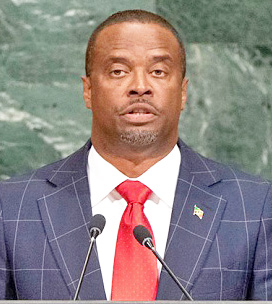
In recognition of the vulnerabilities of small island developing states and the attendant complexities of their status as middle-income countries, Jamaica supported calls for a climate change vulnerability index to provide a standardized method for characterizing vulnerability to the adverse effects of climate change.
“This would enable international financial institutions and bilateral donors, to better channel financial and technical resources, towards countries most susceptible to loss and damage from climate change,” she said.
Also taking the podium, Mark Brantley, Minister of Foreign Affairs in St Kitts and Nevis, spoke in depth about ensuring a sustainable planet – offering thoughts and prayers for those impacted by the three hurricanes in the Caribbean and the two recent earthquakes in Mexico.
He highlighted the various countries and territories that suffered devastation, noting unimaginable destruction in a wide swathe of the Caribbean. Lives have been lost; homes and infrastructure destroyed; economies reduced to tatters; and years of development wiped out. And, Brantley pointed out, “hurricane season for 2017 is not over yet”.
He condemned the “sterile analysis” of GDP per capita that puts the island states in middle and high income countries, locking them out of accessing developmental assistance or affordable financing.
“It is a travesty and a tragedy for the world community to witness such destruction caused by forces entirely outside the control of Caribbean nations and then refuse to allow those nations access to the necessary resources to rebuild,” he said, demanding that a vulnerability index be developed as part of the matrix for accessing developmental assistance.
Pointing to “irrefutable” science, Brantley stated: “Our oceans continue to get warmer due to our continued abuse of our Planet Earth.”
Brantley advocated for treating these phenomena not as natural disasters but as the man-made disasters they are, appealing for a reduction in greenhouse gas emissions and all other actions that aggravate the effects of climate change.
“We cannot continue to abuse our Planet and expect to remain unscathed,” he emphasized.
Also speaking on September 23, Grenada’s Minister for Foreign Affairs Elvin Nimrod underscored that based on recent activities in the Atlantic, “we just cannot dispute that the climate is changing”.
“For those that question the veracity of this science, the cluster of extreme weather events over the last few weeks ought to suffice in sounding the alarm,” he said, stressing that such events disproportionately affect the most vulnerable and advocating that special attention to be paid to women, children, elderly and disabled.
He reiterated Grenada’s commitment to the Paris Agreement, and speaking as Chair of the World Bank’s Small States Forum last June, Nimrod lamented the withdrawal of key partners from the accord, saying: “We do not know these partners to be unreasonable and, therefore, we encourage them to see their own self-interest within the framework of a successful Paris Agreement.”
For her part, Suriname’s Minister for Foreign Affairs Yldiz Pollack-Beighle stressed that in addition to humanitarian aid, the international community must assist in restructuring socio-economic and physical infrastructure for future resilience, saying that “combining forces at a global scale has become crucial.”
She also joined others expressing concern that Caribbean nations are being graduated into middle income country status, with a zero option to obtain concessional loans opening them up to foreseeable natural disasters.
“I add my voice to the lamentation regarding the fact that the vulnerability of these countries should be taken into account when classifications are applied,” Pollack-Beighle said.
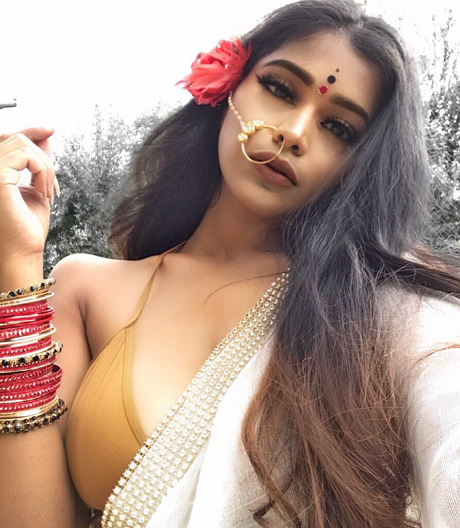
Jayadevan shared two beautiful photos of herself, captioning the tweet with examples of criticisms she’s gotten: “People: ‘what’s with the dot’ ‘what’s that on your nose’ ‘maybe you should tone down all this cultural stuff.'”
Jayadevan now uses her social media platform to try to empower others to embrace their own culture, and her message is resonating with many: Her recent tweet got more than 74,000 likes and 21,000 retweets.
The 22-year-old shares with Yahoo Lifestyle that her family moved to California when her single mom, a registered nurse, was offered a better job opportunity.
“I went to my elementary school wearing a traditional bindi, my thin gold anklets, and my hair in braids like I used to back in my village,” she says. “My sister and I were the only Indian kids at my school, so we would get called all kinds of names and be asked why we don’t speak English or why we had a dot on our forehead.”
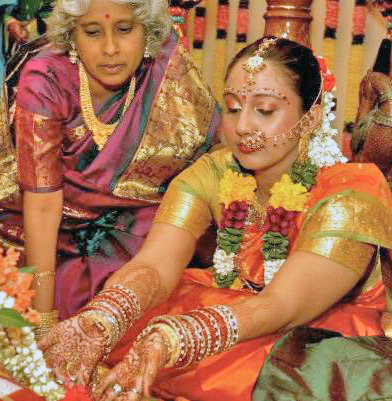
“I wanted to break free from these things that held me back. One day, I just decided to post a picture of me wearing a bindi and share my story on my page, and the responses were incredible,” she says. “I got so many messages and comments from young Indian-Americans who had all been through similar things.”
Her recent tweet sparked a thread in which people encouraged her to keep on being proud of her heritage.
Jayadevan, who now lives in Dallas, has also shared other photos of her looking beautiful in traditional outfits, from a salwar kameez or two to saris and bindis and plenty of sparkling jewels.
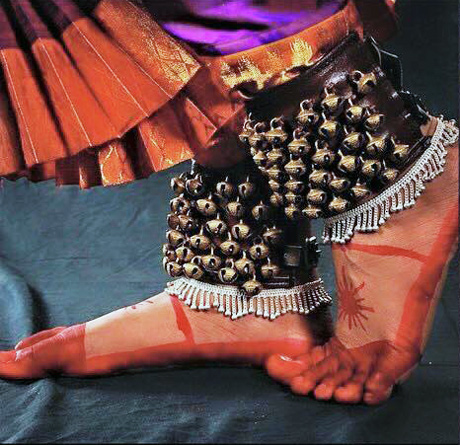
Sanskrit or ghungroo.
To those who genuinely have a question about the meaning behind her accessories, she says, “I have always loved when someone asked me a question out of genuine curiosity about something cultural I was wearing. But most comments I get are rather hateful, and mocking the accessories. The tweet did help spread awareness. I was able to link an article to that tweet that explained the different cultural accessories that people of South Asian culture wear and what each of those things mean.”
So what’s up next for the model? “My biggest dream I’ve had, ever since I was a young girl, was to create a network or organization that supported women’s empowerment,” she says. “I want to empower others to embrace their roots and celebrate their culture. I want them to embrace their gender, their skin color, and all the things that make us unique individuals. I want to represent my culture and heritage with beauty and fashion brands that want to be more inclusive.”
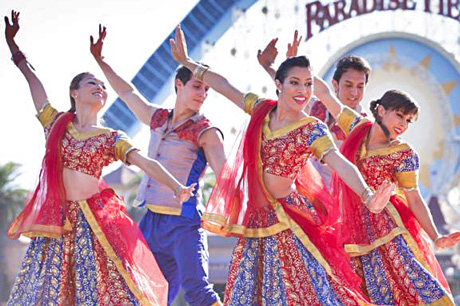
and runs through Jan. 7.
The holiday of Diwali is starting to light up mainstream America.
Diwali, a festival of lights celebrated by Hindus, Sikhs, Jains and others in India and other countries, has long been observed in immigrant communities around the U.S. But now public celebrations of the holiday are starting to pop up in places ranging from Disneyland and Times Square to parks and museums.
The Times Square event is the brainchild of Neeta Bhasin, who says that while many Indian immigrants have found great success in the U.S., "still people don't know much about India. I felt it's about time that we should take India to mainstream America and showcase India's rich culture, heritage, arts and diversity to the world. And I couldn't find a better place than the center of the universe: Times Square."
Bhasin, who came to the United States from India 40 years ago, is president of ASB Communications, the marketing firm behind Diwali at Times Square. The event, now in its fourth year, has drawn tens of thousands of people in the past. It's scheduled for Oct. 7, from 2 p.m. to 9 p.m., with dance performances, Bollywood singers, a bazaar of food, saris and other goods, and a lighting ceremony, http://diwalitimessquare.com/.
While Diwali celebrations are held throughout the fall, the holiday's actual date is Oct. 19. Also called Deepavali, it's an autumn harvest festival held just before the Hindu new year. Celebrations include lighting oil lamps or candles (diyas) to symbolize "a victory of knowledge over ignorance, light over darkness, good over evil," said Bhasin.
The Diwali celebration at Disney California Adventure Park in Anaheim, California, includes performances of traditional Indian dances and a Bollywood dance party for guests. It's part of a festival of holidays at the theme park reflecting cultural traditions from around the world. The Disney festival begins Nov. 10 and runs through Jan. 7.
San Antonio, Texas, has one of the nation's largest city-sponsored celebrations of Diwali, drawing more than 15,000 people each year. The 2017 event, scheduled for Nov. 4 at La Villita, a historic arts village, will be its ninth annual Diwali celebration with Indian dance, entertainment, food, crafts, fireworks and the release of lighted candles into the San Antonio River along the city's River Walk.
New York City's Rubin Museum will mark Diwali with an overnight Ragas Live Festival featuring more than 50 Indian classical musicians performing amid the museum's collection of sacred Himalayan art. The event begins Oct. 21 at 10 a.m. and continues all day and night through Oct. 22 at 10 a.m.. Chai and mango lassis will be served, visitors will have access to all the galleries and pop-up events like meditation and sunrise prayer will be offered. Special tickets will be sold for the opportunity to sleep beneath the artwork.
Other places hosting Diwali celebrations include:
Cary, North Carolina, in Regency Park, Oct. 14
Flushing Town Hall, Queens, New York, Oct. 29
Seattle Center, Oct. 21
Dulles Expo center in Chantilly, Virginia, Oct. 7-8
Memorial Park in Cupertino, California, Sept. 30
In Columbus, Ohio, the Ohio History Center is hosting a photo exhibit about the city's fast-growing population of immigrants from Nepal, Bhutan and India, with a Diwali event Oct. 8
Bhasin said Diwali's message is particularly timely now. "It is extremely important to be together and showcase to the world, not only Indians, but the entire immigrant community, to be together with Americans and to show the world we are one, we are all the same human beings," she said.
To advertise in ICW call
Call 905-738-5005